Telehealth Training Program
Welcome to your source for free online telehealth training.
This microlearning series is made available by a group of 15 Primary Health Networks (PHNs) from across Australia.
In 2024, this group developed comprehensive online training for the delivery of telehealth for residential aged care. This training helps you provide an evidence-based telehealth service for aged care residents, including setup, governance, management and usage of telehealth.
This microsite provides you access to the telehealth training program to help you implement the training for your organisation. Two learning streams recognise the unique needs of residential aged care staff, and clinicians providing services to residents. Browse the catalogue for each stream, preview the learning content and download the microlearning modules you need or the entire catalogue. Then, you can upload the modules to your Learning Management System and set up the training to suit your needs.
Continuing Professional Development Accredited
This training is endorsed Continuing Professional Development (CPD) for general practitioners (GPs) and nurses (practitioners, registered and enrolled). Endorsement is provided through the Australian College of Rural and Remote Medicine (ACRRM), the Royal Australian College of General Practitioners (RACGP), and the Australian College of Nursing (ACN).
GPs and nurses may also claim additional CPD hours, where they have explored additional research, reflected on their practice, or engaged in implementation of the learning.
Access is FREE
This training is now available free of charge, to all Commonwealth funded residential aged care homes and clinicians providing telehealth to residents in aged care, Australia wide.
Training Streams
Who’s it for and what does it cover?
Residential aged care
This training stream is for onsite staff and clinicians working inside aged care homes. This includes not just personal care workers but also nurses, specialists, managers and other staff working in residential aged care settings.
Remote clinical
This training stream is for remote-end clinicians and other health professionals providing medical, health and wellbeing services to the aged care sector, practicing offsite. This includes not just GPs, but also medical specialists and allied health professionals like counsellors, dietitians and physiotherapists.
Discover Telehealth Training
Innovative learning formats and features





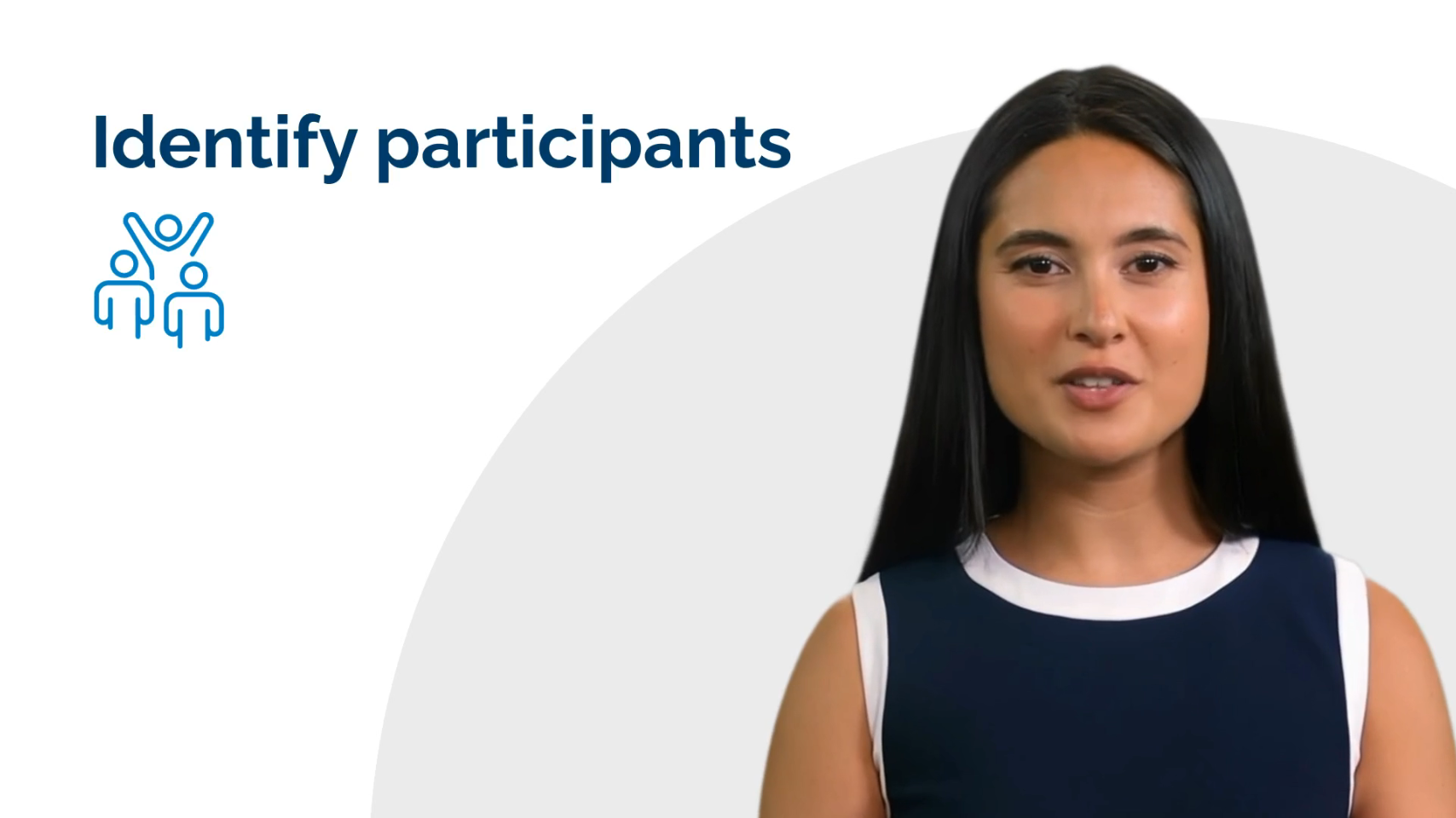
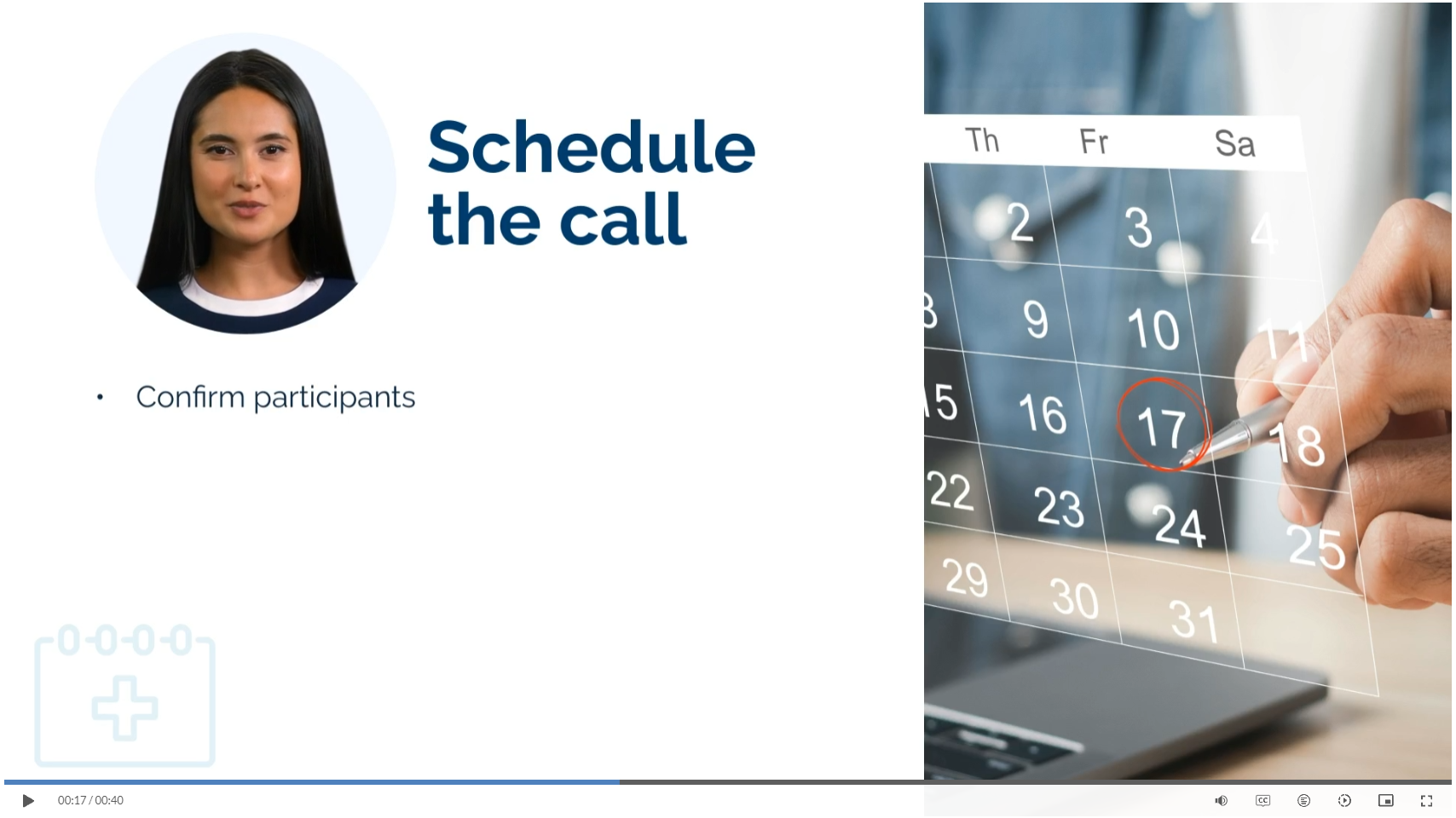
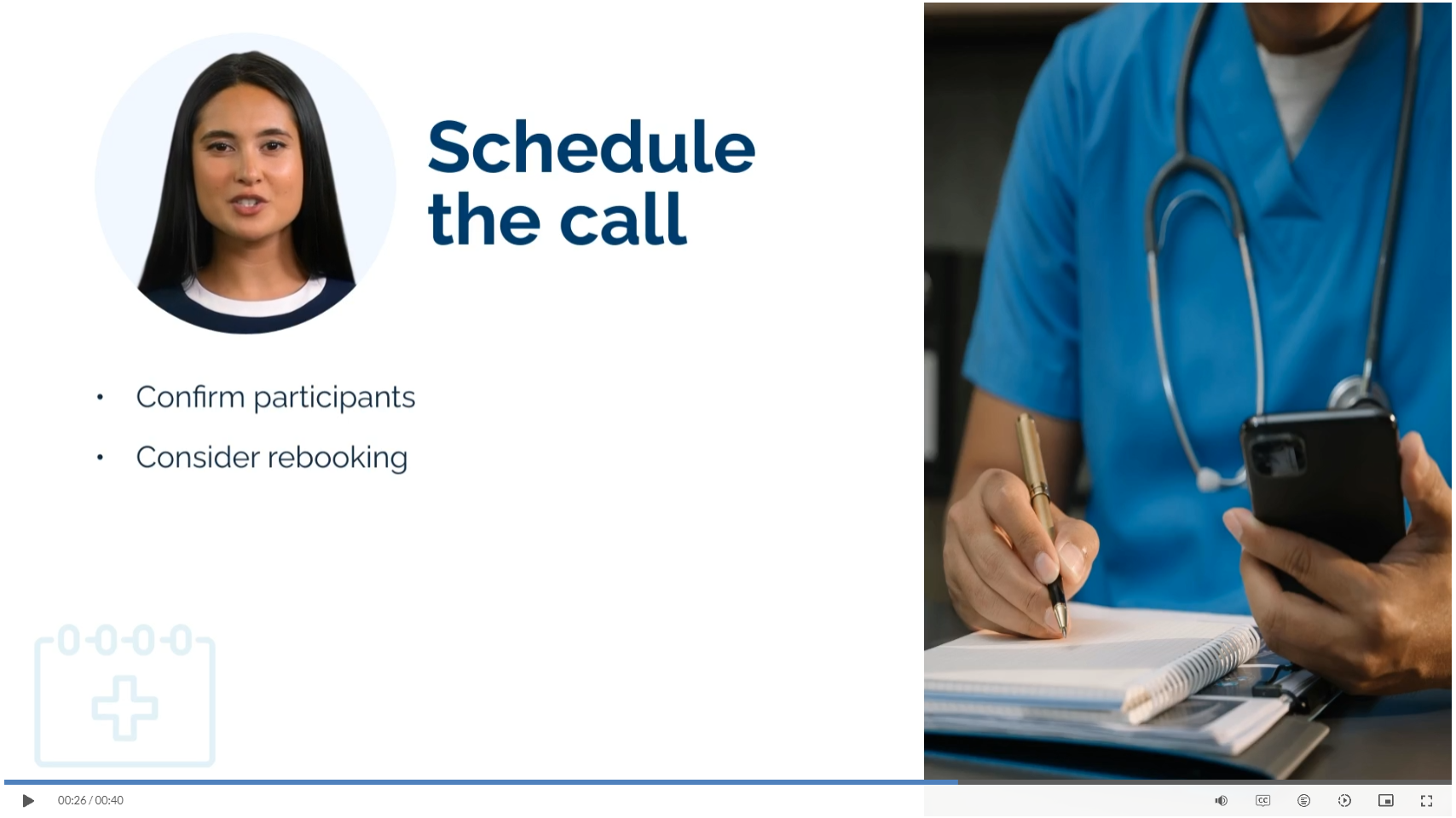
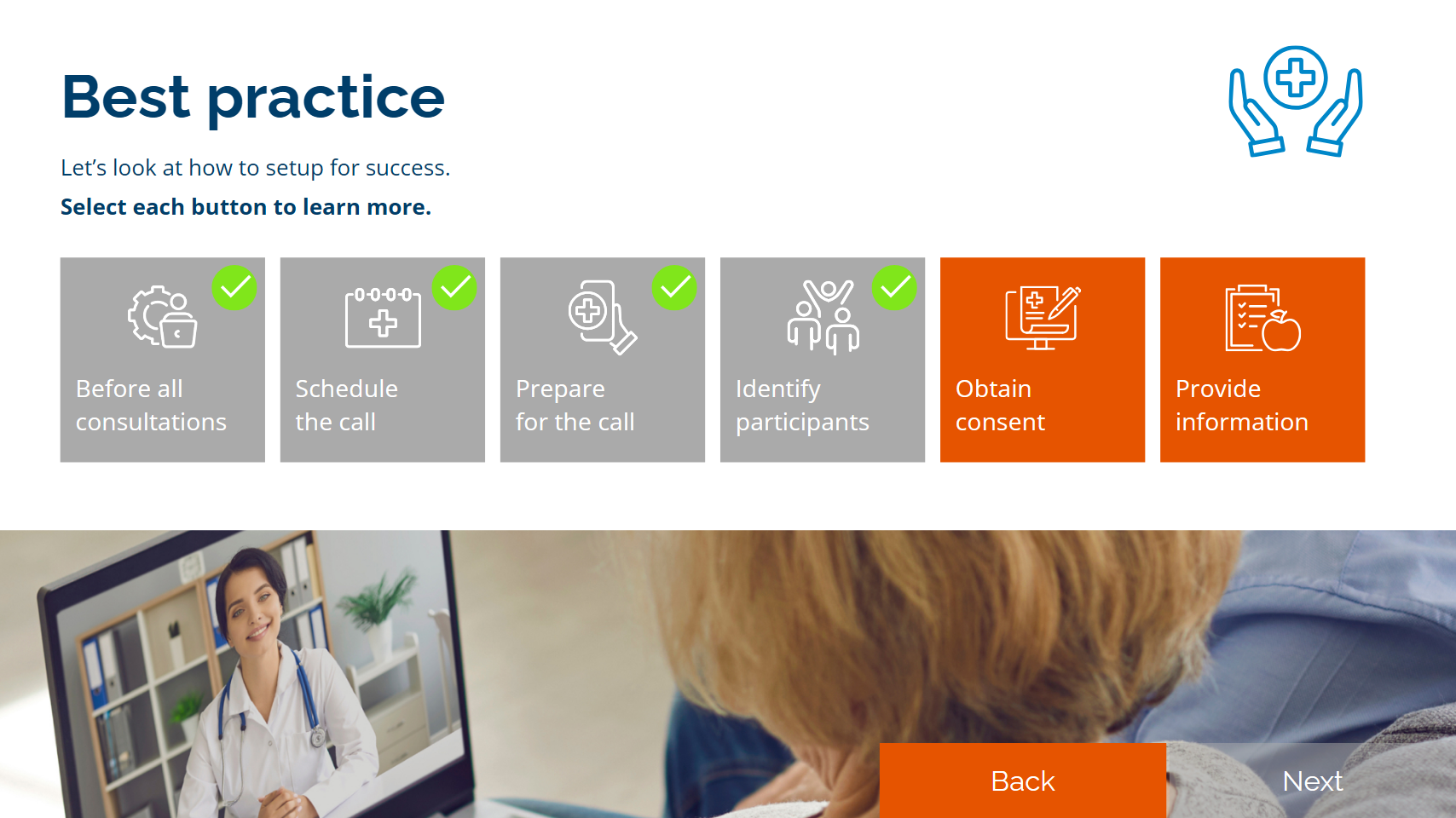
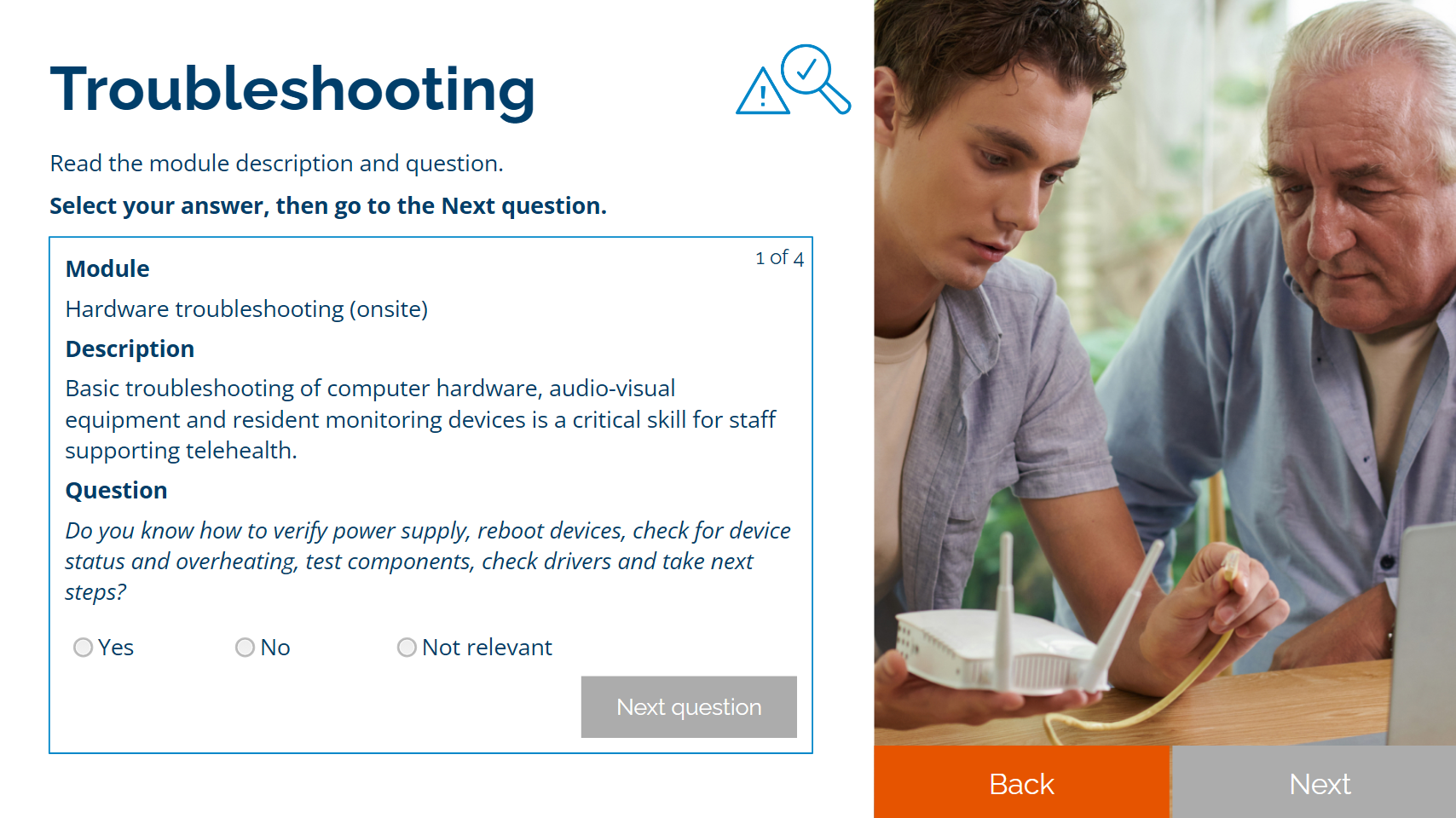


Scenario-based learning
Engaging example videos
Reflection and reinforcement
Troubleshooting checklists
Key industry resources
How to
Access and implement the microlearning modules on your LMS
Register to request access to the modules.
Your application will be reviewed and if eligible, access details will be sent by email.
Select your stream to view the relevant module catalogue.
The modules are divided into two training streams: Residential aged care and Remote clinical.
Open a module to preview it.
When you select a module from the catalogue you will be able to see how it works, preview the content and make sure it's right for your team.
Download the module for uploading to your LMS.
Individual modules can be downloaded as a ZIP file containing a SCORM package that you can upload to your LMS. You can also download the entire catalogue in a single ZIP file with one click.
In the Industry
What people are saying about Telehealth

“It is amazing these days that you can receive these medical treatments without leaving your room. I am excited to see it up and running for my mum! ”
- Sue Skinner, Family

"Telehealth has given our staff the support to connect with a clinician. We are able to escalate clinical concerns which provides early intervention and avoids unnecessary hospital transfers. We have used telehealth for wound reviews, infection management and end-of-life care. I believe this has provided our residents with choice, dignity and respect.”
- Trudy Hetherington, Care Manager

“It will allow our GPs to operate a more flexible model of care and make case conferencing with family members so much easier.”
- Melinda Benson, General Manager
Getting started
Why host this training?
An opportunity to improve continuity of care for residents.
- Telehealth makes it easier for clinicians to do regular resident check-ins. This can improve outcomes for ongoing medical conditions like diabetes and wound management, while maintaining optimal continuity of care.
- Telehealth can also make it easier to update, discuss and share electronic health records and care plans. For example, with aged care staff and other medical professionals.
Telehealth can lead to better health outcomes for residents.
- Regular telehealth check-ins and remote monitoring can alert clinicians to issues, allowing for timely intervention.
- Telehealth can also make it easier for multidisciplinary teams to case conference, leading to more effective care planning. For example, between a clinical care manager, nurse, GP and non-GP specialist.
Allow residents greater access to services.
- Residents can consult with a wider range of specialists Australia wide, without leaving their room or home.
- Telehealth is particularly beneficial for residents in remote areas, where healthcare resources may be scarce.
- It also benefits residents who are not fluent in English, as interpreter services may be more easily accessed via telehealth.
Provide residents and their families with more flexible service delivery options.
- Telehealth consultations can be scheduled around the resident’s routine and the schedules of family members and carers, as well as the availability of clinicians.
- It also means family and carers can engage with the resident’s care without needing to travel.
- Plus, it opens up more options to access healthcare, reducing wait times and increasing availability.
Increase resident comfort and convenience while they’re accessing care.
- Residents can remain in their residential care environment, reducing the stress and anxiety of hospital and clinical visits.
- Telehealth also reduces the physical and emotional toll of visiting a hospital or clinic.
Offer residents options for access to care.
- Residents can have the choice of in-person, telehealth or even phone consultations. This can give them a choice based on their individual needs and circumstances.
- Most telehealth services can be accessed via video, audio or text. And they usually work on phones, tablets and laptops. This allows residents to use the technology that they’re most familiar with.
- Plus, onsite staff like registered nurses and family members can join online consultations as well, enabling them to be actively involved in the resident’s ongoing care.
Telehealth can increase resident satisfaction with health service delivery.
- Having faster access to healthcare can increase confidence among residents, their families and carers. It can also reduce avoidable hospital visits through timely intervention.
- And, where telehealth can offer better care outcomes, it can also increase resident trust and engagement.
Reduce hospital and clinic visits, travel time and enable timely intervention.
- Telehealth can reduce the need to transport residents for hospital visits or clinic appointments, saving time for both aged care homes and family members.
- Remote monitoring can also alert clinicians to potential issues before they escalate, enabling timely intervention and reducing emergency department presentations.
Reduce consultation times and increase access to healthcare services.
- Clinicians can review notes and results before the session, enabling them to pre-plan and have a focused consultation.
- And residents can access clinicians from across different geographical locations, expanding resident access to services and clinician access to residents.
Enhance communication, data sharing and peer learning to enable multidisciplinary teams.
- Telehealth platforms facilitate communication among healthcare professionals involved in a resident’s care. This makes case conferencing easier and enables care teams to develop and implement care plans together, enhancing treatment outcomes.
- Digital systems offer instant access to residents’ records and enables secure information sharing within care teams and better support for residents.
- It can also be used for peer-to-peer learning and sharing of best practices between medical professionals, further enhancing resident care outcomes.
Reduce infection transmission and enable clinician access to residents in isolation.
- Reducing the number of in-person visits lowers the risk of spreading infectious diseases when managing residents who may be infected.
- Telehealth can also allow monitoring of residents who are in isolation, and unable to leave their room or travel.
Improve access to consultations and engagement with resident care for families and carers.
- Telehealth allows family members and carers to participate in consultations, fostering a holistic approach to care.
- And clinicians can more easily share care plans and updates with a resident’s broader support network.
Enable medication monitoring and care plan engagement.
- Via telehealth, clinicians have more opportunities to check that prescribed medications are having the intended outcomes for residents and, where needed, make adjustments.
- Also, including the pharmacist in telehealth can reduce polypharmacy and drug interactions.
- Clinicians can also monitor post-procedural care and how effective and acceptable the care plan is for the resident.
- Telehealth also helps clinicians collaborate with onsite nurses to adjust the plan if needed.
Access is FREE
This training is now available free of charge, to all Commonwealth funded residential aged care homes and clinicians providing telehealth to residents in aged care, Australia wide.
